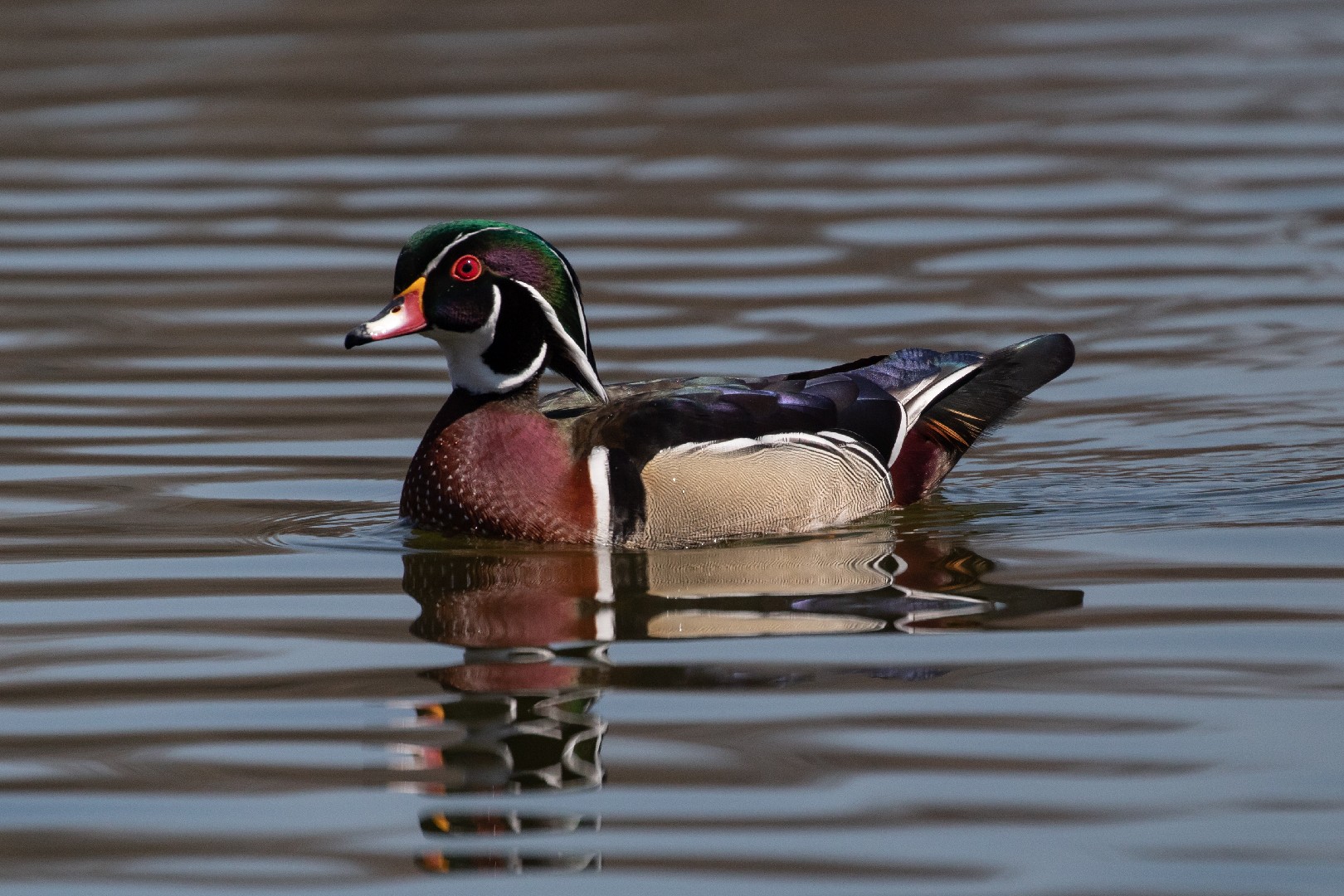Wood Duck
A species of Mandarin Duck and Wood Duck, Also known as American Wood Duck, Summer Duck Scientific name : Aix sponsa Genus : Mandarin Duck and Wood Duck
Wood Duck, A species of Mandarin Duck and Wood Duck
Also known as:
American Wood Duck, Summer Duck
Botanical name: Aix sponsa
Genus: Mandarin Duck and Wood Duck
Content
Description People often ask General Info
 Photo By Ryanfmandelbaum , used under CC-BY-SA-4.0 /Cropped and compressed from original
Photo By Ryanfmandelbaum , used under CC-BY-SA-4.0 /Cropped and compressed from original Description
Easily recognized by their distinctive plumage, wood Ducks nest in trees near water sources. After they hatch, the ducklings must jump down from their nests (sometimes from as high as 15 m off the ground!) and waddle toward the water, from which the mama calls to them. In the 19th and 20th centuries, these birds were hunted to near-extinction. Conservation efforts have been successful and there are now more than 1 million wood Ducks enjoy life in the North American wilds.
Size
47 - 54 cm
Life Expectancy
4 years
Nest Placement
Cavity
Clutch Size
6 - 16 eggs
Incubation Period
1 - 2 broods
Number of Broods
28 - 37 days
Nestling Period
56 - 70 days
Feeding Habits
Wood Duck primarily consume plant materials like acorns, grains, seeds, and fruits, constituting over 80% of their diet. They also eat insects, mollusks, and arthropods, adapting to eating on dry land for nuts or grains as needed.
Habitat
Wood Duck's preferred habitats are temperate terrestrial regions with abundant water sources such as lakes, rivers, and streams. They often occupy marshes and swamps in agricultural or riparian landscapes. Dense vegetation providing 50-75% cover, including fallen trees and shrubs, is essential for their concealment and sustenance, favoring bottomland forests and areas mixing open water with plant shelter.
Nest Behavior
During early morning, breeding pairs search for suitable nesting sites, often near water. Wood Duck cannot create cavities but will use nest boxes. They engage in egg-laying after nest preparation, and parents are involved in caring for the young.
Nest Characteristics
Wood Duck choose large trees with a diameter of over 1 foot, preferring cavities 2-60 feet high. They use natural holes or woodpecker cavities, lined with the female's down feathers. Nest entrances may be small to deter predators, with variable cavity depths.
Dite type
Herbivorous
People often ask
General Info
Feeding Habits
Bird food type
Bird Feeder Type

Platform
Sounds
Call
Recording location: United States
Behavior
Wood Duck exhibit a range of behaviors throughout their daily activities. They forage mainly by dabbling, sometimes by shallow diving, and are adept fliers, reaching speeds up to 30 mph. Mating rituals are intricate; males impress females with physical displays including head-tilting and feather-flaunting, and pairs often engage in mutual preening. A notable trait of wood Duck is intraspecific brood parasitism; females may lay eggs in other wood Duck's nests, leading to mixed clutches, sometimes caused by the prevalence of artificial nesting sites. Wood Duck do not generally defend territories, except to protect mates from rival males.
Distribution Area
The birds are year-round residents in parts of its southern range, but the northern populations migrate south for the winter. They overwinter in the southern United States near the Atlantic coast. 75% of the wood ducks in the Pacific Flyway are non-migratory. Given its native distribution the species is also a potential natural vagrant to Western Europe and there have been records in areas such as Cornwall, Scotland and the Isles of Scilly. 
Species Status
The population of the wood duck was in serious decline in the late 19th century as a result of severe habitat loss and market hunting both for meat and plumage for the ladies' hat market in Europe. By the beginning of the 20th century, wood ducks had virtually disappeared from much of their former range. In response to the Migratory Bird Treaty established in 1916 and enactment of the U.S. Migratory Bird Treaty Act of 1918, wood duck populations began to recover slowly. 